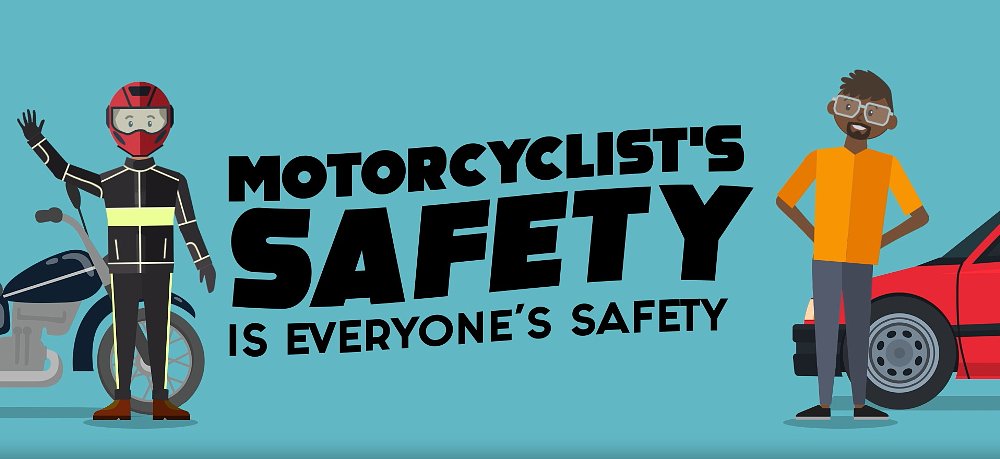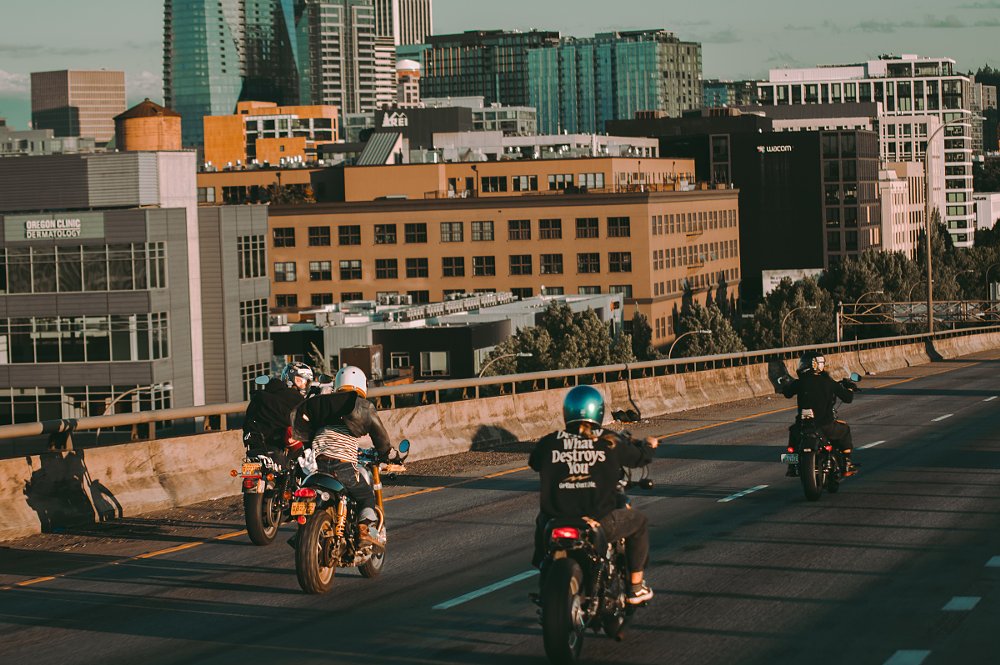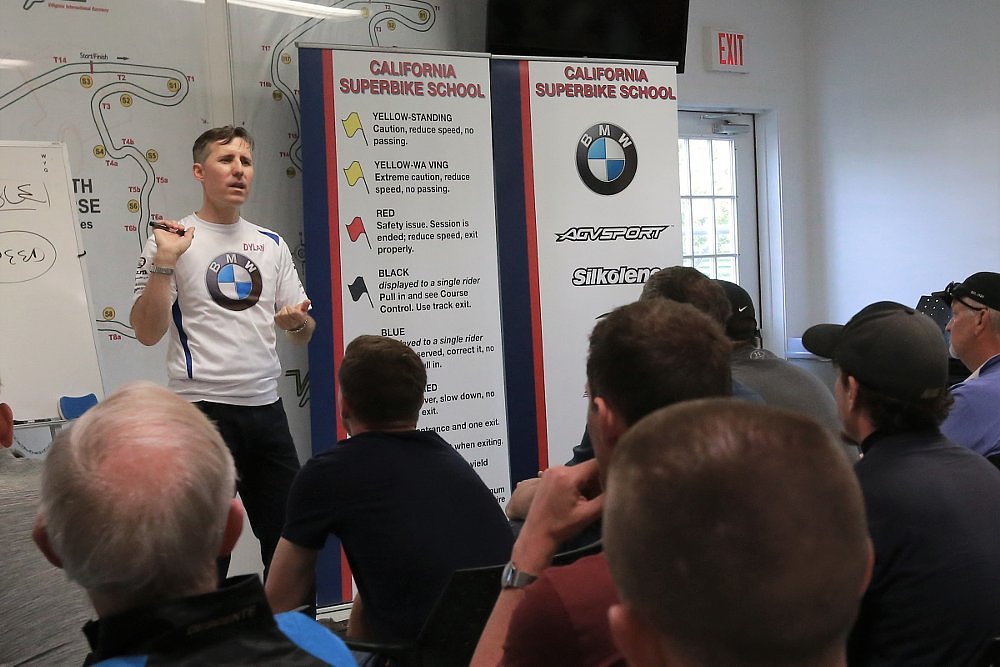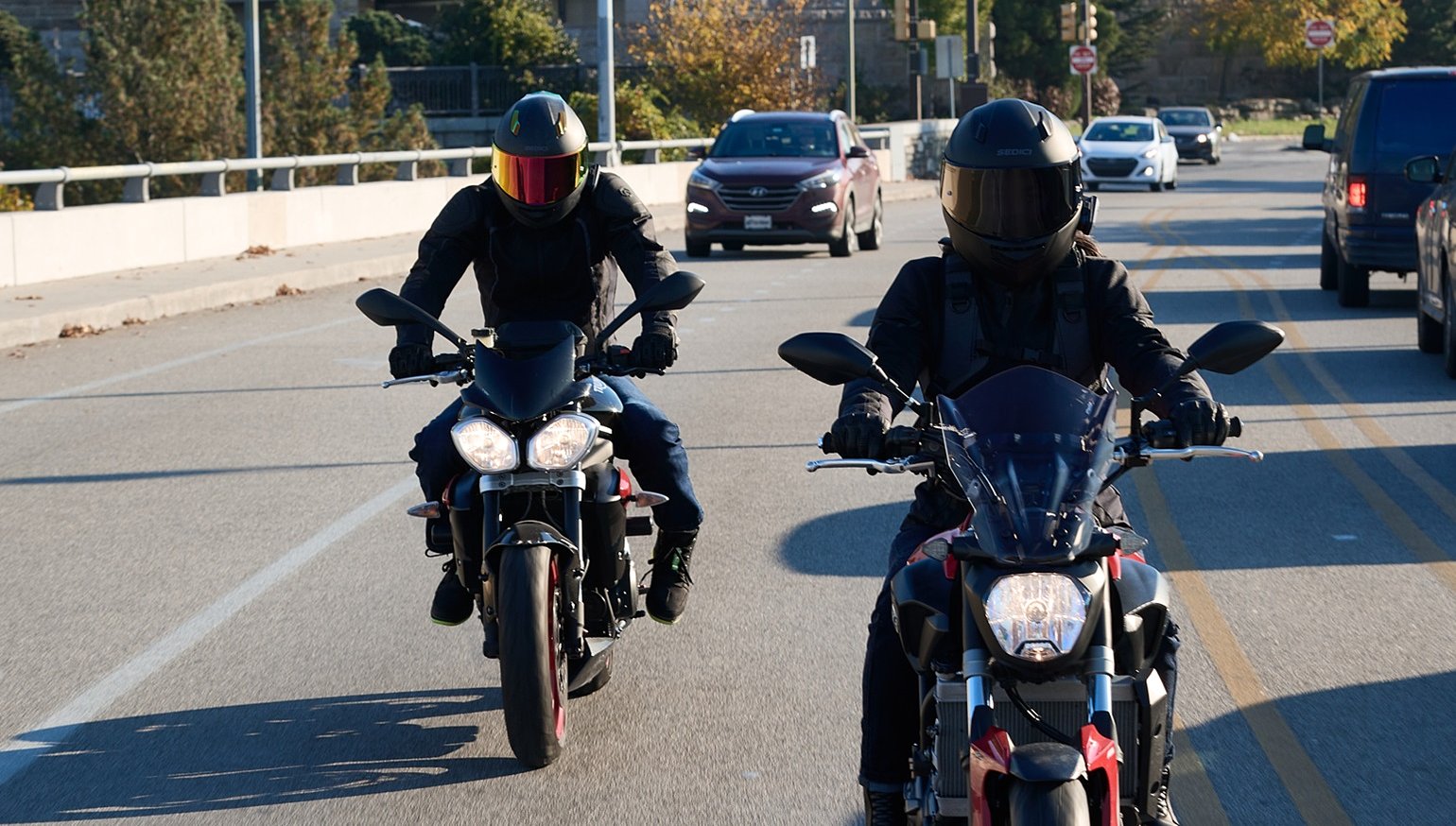May is Motorcycle Safety Awareness Month, and the focus of the government campaign is to get drivers to be more aware of motorcycles on the road. But all of us who ride on the streets know that we can't just rely on others for our safety. Mostly, it's up to us to improve our odds of survival.
With May beginning and the inevitable public service announcements popping up, that got me thinking about some of the common themes we've addressed over and over for years here at Common Tread. From the beginning, our mission has been to enhance the experience of riders and one way to do that is to offer advice and things to think about that will help riders be more competent, and therefore more confident and safer. Like everything else, riding a motorcycle is more fun when you do it well, and getting hurt is never fun.
You, the readers, have also sent us a clear message that you're interested in riding better and staying safer. Response to our articles on road safety and riding skills has been consistently strong. The single most widely read article in the history of Common Tread is one I wrote back in 2016 about a study done by researchers at Virginia Tech University about how and why motorcycle crashes occur. I wouldn't say it's the best article we've published on the topic, but the fact that hundreds of thousands of people have read it shows that riders are looking for answers.

Here are some of the other themes we've returned to over and over in the past 10 years that I think are worth contemplating for our own version of Motorcycle Safety Awareness Month.
Attitude and responsibility
Another article from the early days of Common Tread sets the appropriate tone and is worth recalling, in my opinion. Former staffer Lemmy, who did a lot of commuting by motorcycle into Philadelphia, outlined his three mental keys to street survival. One is avoiding an "us versus them" attitude and raging about "cagers," which gets us nowhere. Second, related to that, is getting angry when someone does so something stupid or, worse yet, smacking some shmuck's car mirror, instead of surviving it, putting it behind you, and moving on. And third and most importantly, as Lemmy put it, "I operate under the assumption that every accident is my fault. All of them."
If someone in a car runs a stop sign and hits you, it may not be your fault, legally, but it's going to be your problem, primarily. Taking responsibility for yourself — did you check for crossing traffic? — is the only attitude that really improves our own awareness, and therefore survival odds.

I returned to the same topic in an article five years later that drew well over 100 reader comments. Even though it's not literally 100% true, I said we should ride as if all crashes are avoidable. It's an attitude taught in the Stayin' Safe riding instruction I've taken twice and it puts the onus on us to keep ourselves safe. Are we choosing the optimal lane position to put a cushion of space between us and threats? Are we anticipating potential threats and planning an escape route? Or are we just rolling along, blithely counting on others to look out for us?
We love to rage about distracted drivers, but our energy is better spent in considering strategies to deal with them. Years ago, I wrote about how I was making small adjustments in my riding habits, such as lane position, in response to the increase in distracted driving, and I followed that up by interviewing Stayin' Safe's Eric Trow for his insights into how our strategies should be evolving.
And when a crash does happen, the only good thing is learning from it. To do that, Zack Courts pointed out, we first have to take responsibility for our own portion of blame.
Over the years, I've written more than once about the concept of inattentional blindness, the phenomenon that's usually to blame for car drivers pulling out in front of us for no apparent reason, sometimes with tragic results. The purpose, though, is not to rage futilely against "cagers," but to understand what is a genuine psychological phenomenon and to strategize ways to deal with it.
I think that's been a clear thread through the Common Tread articles on these topics. From our most recent in-depth look at how to improve your odds of street survival, to articles from years ago, we've focused on the factors that are in our control, such as the very simple one of not drinking and riding, an ongoing problem past and present.

Tips and advice for riding better
Over the years, we've had expert riders and instructors sharing tips and expertise. From California Superbike School's Dylan Code writing about everything from the true importance of body position in the hierarchy of riding skills (spoiler: often overrated) to how trying different kinds of riding can improve your overall skill level. Greg Widmar, better known on social media as MotoJitsu, wrote about the 10 most common mistakes street riders make, another all-time popular story on Common Tread. And years before that, I interviewed Trow and Ken Condon, both instructors and columnists for motorcycle magazines, about the most common mistakes they saw among their students.
We've also written a lot about training options available to riders. Spurgeon has written not just once but twice about what he's learned from the California Superbike School instruction. We've had a story on the Street Skills riding course and Advanced Street Rider Training Days. The latter is track-based instruction specifically for riders on cruisers, adventure bikes, and other motorcycles not normally found at a track day. Even online learning with the virtual version of the Yamaha Champions Riding School's ChampU digital instruction. And that's not to mention off-road courses.
We've also tried to counter the misinformation out there. No, helmets don't cause neck injuries and you should definitely use your front brake on the street.
I want to end by referring back to the oldest Common Tread story I will cite in this article. It's a piece I wrote in the early days saying that the best single piece of motorcycling advice I'd ever heard was "look where you want to go." It's simple yet powerful because it taps into how our minds and bodies work, the same way as coach tells a batter in baseball to keep his eye on the ball. It works for a new rider taking an MSF course or an expert trying to set a personal best lap time at the track.
It's advice that also works more broadly in life. Keep your eye on the goal. If one of your goals is to be a better and safer rider, maybe some of the articles linked above will help you make the most of your own personal Motorcycle Safety Awareness Month.

 Membership
Membership










